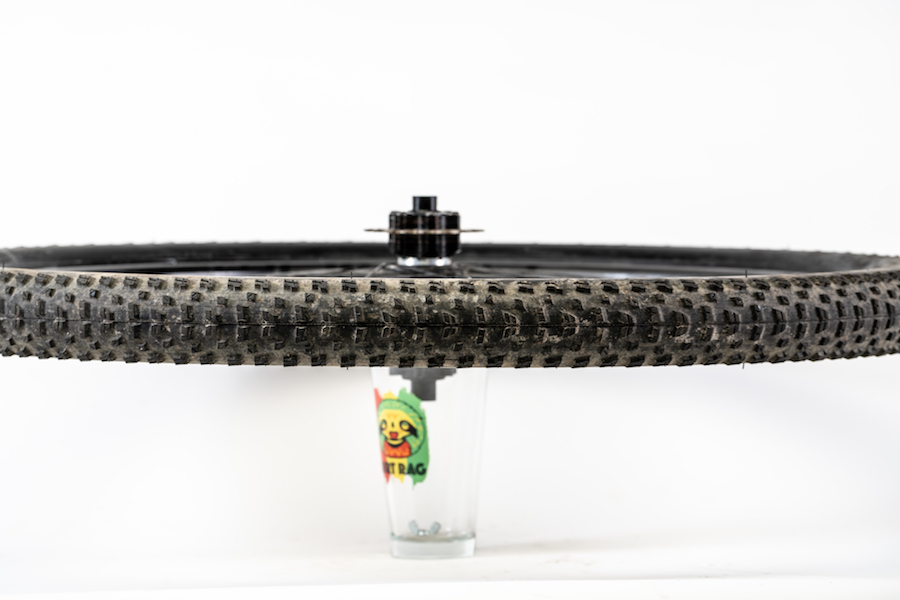Maxxis Rekon Tire Review
Originally posted on January 8, 2019 at 4:20 amMaxxis Rekon 3C/EXO/TR Tires
maxxis.com
$69 – $92
Earlier this year in issue # 203, I reviewed the dual-compound Maxxis Rekon 2.6 tires. There was a lot of potential for the tread design, but finding the desired air pressure was finicky and the tire was less than desirable when things became damp. Typically, the triple-compound rubber takes precedence as it seems to provide more predictable cornering characteristics and increased grip on slick roots and rocks, so I was eager to get some miles on the now-available 3C version (3C = triple-compound).
Below I review the Maxxis Rekon in 3C MaxxTerra 2.6, 3C MaxxTerra 2.4 and 3C MaxxSpeed 2.25 versions. All tires were tested on a 29-inch wheel with 28 mm internal width.

If you are not familiar with all of the Maxxis buzz words, check out the company’s bike technology page, here.
In the past, my preferred Maxxis tire setup has been the Ardent EXO 2.4 up front paired with an Ardent Race 3C/EXO 2.35 out back. This setup has worked fine; it’s predictable, not overly heavy, offers ample puncture protection, decent balance between grip and rolling resistance but it’s not perfect. The Ardent is often a love-it or hate-it tire, and somehow I find myself smack dab in the middle; really, it was the best option up-front that’s less aggressive than a Minion. Then, the Maxxis Rekon became available in non-plus sizes, and the Ardent may have finally met its match. The Rekon looks like a mix between the Maxxis Ikon and the Maxxis High Roller II and finds itself comfortably situated as an aggressive cross-country/trail tire that is suitable for most conditions.

On the Trail
Running the MaxxTerra 2.6/2.4 fore and aft respectively through the summer, the tires saw roughly 800 miles of trail ranging from soft and soggy to hard packed and dusty.
Up front, the volume of the 2.6 is a perfect balance point of plush volume without sacrificing predictability. Typically for my riding style, anything over a 2.6 width feels either too squirmy in the corners or over-inflated, and I’m often unable to find the ideal pressure. I didn’t experience any issues with nailing down the right PSI as I did with the dual-compound Rekon either. For the most part, the tire was set at 17-18 PSI, and away I went. For an 800-ish gram tire, the cornering knobs are plentiful, and transitioning to them feels consistent regardless of how aggressive the lean is through the corners.
Out back, the MaxxTerra 2.4 is by no means a tire I would run on any endurance related race; this beast is without a doubt a trail tire. The rubber is grippy, it’s a little heavy at 850-ish grams, it’s not all that fast rolling when compared to the Ardent Race (as it shouldn’t be), but gawd damn it’s a fun rear tire. Initially, I had the MaxxSpeed 2.25 mounted, but the 2.6/2.25 combo was not evenly matched. The rear of the bike felt out of sync with the front, and it kept wanting to slide out from beneath me. Once the 2.4 replaced the 2.25, it was a perfect balance. You may be wondering why the 2.4 is heavier than the 2.6 even though they have the same hot patches (3C MaxxTerra/EXO/TR); the 2.4 tire is only available in 60 TPI (threads per inch), and the 2.6 is a 120 TPI. Ultimately this means that the 60 TPI thread count has increased puncture protection at the cost of added weight. Talking to Maxxis, I asked if a 120 TPI Rekon 2.4 was on the chalkboard but was told not to expect it anytime soon. Of the group, the 2.4 did seem to show some heavy wear earlier than expected; I can’t be sure if it was due to some of the rocky riding conditions or if there was an underlying issue with the tire. Typically, if you experience an abnormality, it may be covered under warranty from Maxxis.
The MaxxSpeed 2.25 would be the diamond in the rough of the group. Knob height is noticeably shorter on this tire size compared to both the 2.6 and 2.4 placing it more within the cross-country column. Don’t let the 2.25 size fool you though; this is a generously voluminous and lightweight tire measuring to be the same width as an Ikon 2.35 and it weighs roughly 70 grams less. When compared to the Ikon 2.35 as a rear tire, the Rekon rolls equally as fast but offers a slight advantage with larger corner knobs. Compared the Ardent Race 2.35, again as a rear tire only, the Ardent Race rolls slower but has better braking control and cornering characteristics.

Conclusion
If Maxxis was searching for an Ardent killer, I think they finally found it. The Rekon 3C MaxxTerra 2.6 is a great all-around tire. For me, it’s the new Goldilocks front tire, so much so that I’ve recommended it to multiple friends now. As for the rear, the 2.4 has everything I want, but it’s still a bit on the heavy side; bring that weight down to the upper 700s (by going to 120 TPI) and problem solved. Until then, it will remain on the bike. Unless I decide to enlist in some multi-hour death march, then the Ardent Race is getting mounted.